Introduction: The New Space Race and Moon Base Dreams
For centuries, the Moon has been a subject of human fascination. From ancient mythologies to modern scientific exploration, the Moon represents a destination that has sparked imagination and innovation. In recent decades, however, it has become more than just a symbol of wonder—it is now the focus of an emerging new space race. The concept of permanently residing on the Moon, a long-held dream, is becoming increasingly plausible. Thanks to advancements in space technology, international cooperation, and growing interest from both governmental and private space organizations, lunar base construction is moving from conceptual plans to actionable steps.
NASA’s Artemis program has set ambitious goals to return humans to the Moon by the mid-2020s, with the ultimate aim of establishing a sustainable presence there. Similarly, various private companies, such as SpaceX and Blue Origin, are also working on technologies that could play a significant role in lunar base development. However, the question remains: how far are we from creating a permanent human settlement on the Moon by 2024?
This article explores the current progress in lunar base construction, the key challenges that must be overcome, and whether we are truly close to achieving permanent human presence on the Moon within the next few years.
The Vision of a Lunar Base: Why the Moon?
Before delving into the timeline and technological advances, it’s important to understand why humans want to establish a base on the Moon in the first place. The Moon presents a unique set of opportunities for scientific research, technological development, and space exploration:
1. A Stepping Stone for Mars and Beyond
The Moon provides an ideal testing ground for technologies and systems that will be used for longer-term space exploration, particularly missions to Mars. Establishing a permanent base on the Moon would help space agencies like NASA and private companies gain valuable experience in living and working in space, dealing with issues such as life support systems, resource utilization, and radiation protection.
2. Resource Utilization: The Moon as a Mining Hub
The Moon is believed to contain valuable resources, including water ice, helium-3 (a potential fuel for nuclear fusion), and rare minerals. Water, in particular, could be a game-changer for lunar missions. If water ice can be extracted from the Moon’s poles, it could be converted into drinking water, oxygen for breathing, and even hydrogen for fuel. This could drastically reduce the cost of space exploration by making the Moon a hub for resource extraction.
3. Scientific Exploration
The Moon is an unparalleled environment for scientific research. Its lack of atmosphere allows for an unobstructed view of the universe, making it an ideal place for astronomical observatories. Additionally, studying the Moon’s surface and geology could provide insights into the early history of the solar system and even Earth.
Progress Towards Lunar Base Construction: Key Developments
1. NASA’s Artemis Program and the Gateway Space Station
NASA’s Artemis program is at the forefront of efforts to return humans to the Moon and lay the foundation for a sustainable lunar presence. The first mission of the Artemis program is planned for 2024, with the launch of the Artemis I uncrewed mission, which will test the Space Launch System (SLS) and the Orion spacecraft. Artemis II, the first crewed mission, is scheduled for 2025, and it will orbit the Moon in preparation for a lunar landing.
The key milestone of this program is the construction of the Gateway, a space station that will orbit the Moon. The Gateway will serve as a staging point for crewed missions to the lunar surface, providing astronauts with a place to rest, resupply, and prepare for their missions. The Gateway is also designed to be modular, allowing for international collaboration and expanding capabilities over time.
2. Lunar Landers and Habitats
One of the most exciting aspects of the Artemis program is the development of lunar landers that will take astronauts from the Gateway to the lunar surface. NASA has selected SpaceX’s Starship as a candidate for the Human Landing System (HLS), which will be responsible for carrying astronauts to the Moon. The Starship is designed to be reusable and capable of carrying large payloads, making it a key element in NASA’s long-term plans for the Moon.
In parallel, NASA and its partners are working on the development of lunar habitats. These habitats must be able to withstand extreme temperatures, radiation, and the Moon’s harsh environment. The Lunar Gateway Habitation Module is expected to provide a safe environment for astronauts to live and work on the Moon. These habitats will be critical in establishing a long-term human presence.
3. Private Sector Involvement: SpaceX, Blue Origin, and Others
In addition to government space agencies, private companies are playing a crucial role in lunar base construction. SpaceX, with its Starship program, is developing a vehicle capable of landing on the Moon and carrying large numbers of astronauts and cargo. Blue Origin is also working on a lunar lander and plans to support NASA’s Artemis missions by providing transportation to the lunar surface.
These companies are not only driving innovation in launch vehicles and lunar landers, but they are also investing in lunar infrastructure. For example, SpaceX’s reusable Starship could be used for cargo delivery and crew transport, significantly reducing the cost of lunar exploration and paving the way for a sustainable lunar base.
4. International Collaboration
The construction of a lunar base will likely involve international collaboration. NASA has already partnered with other space agencies, including the European Space Agency (ESA), the Canadian Space Agency (CSA), and the Japanese Aerospace Exploration Agency (JAXA), to work on technologies for the lunar Gateway and the Human Landing System. The lunar base itself could become a global project, involving contributions from countries around the world.

Challenges to Overcome: Technical and Logistical Hurdles
Despite the exciting progress, several challenges must be overcome before we can establish a permanent presence on the Moon.
1. Radiation Protection
One of the most significant challenges for lunar habitation is the high levels of radiation on the Moon. Without an atmosphere to protect them, astronauts on the Moon will be exposed to harmful cosmic rays and solar radiation. Solutions must be developed to protect astronauts, such as building lunar habitats underground or using regolith (lunar soil) as a radiation shield.
2. Life Support Systems
Sustaining human life on the Moon requires reliable life support systems for air, water, food, and waste management. While technology for life support is already in use on the International Space Station (ISS), the Moon presents additional challenges, including the need to recycle resources efficiently and deal with the Moon’s limited resources.
3. Logistical Support and Sustainability
Building a lunar base will require a supply chain capable of delivering everything from building materials to food and equipment. As the goal is to make the base self-sustaining, this will require in-situ resource utilization (ISRU) technologies, such as mining water ice for drinking water and oxygen. The ability to produce fuel from lunar resources will also be critical for reducing the need to transport supplies from Earth.
How Far Are We from Permanent Human Presence on the Moon by 2024?
While significant progress is being made, permanent human presence on the Moon by 2024 may still be somewhat ambitious. The Artemis I mission is scheduled to launch in 2024, and the first crewed mission (Artemis II) will follow in 2025. These missions will lay the groundwork for future human missions to the lunar surface, but establishing a sustainable base could take longer.
Several factors will determine the timeline:
- Technological readiness: The development of lunar landers, habitats, and life support systems must proceed at a pace that ensures their reliability in the harsh lunar environment.
- International collaboration: Cooperation between space agencies and private companies will accelerate progress but may also introduce complexities in coordination and resource allocation.
- Funding and political support: Ongoing financial support and political will are critical for keeping the momentum going. Economic and geopolitical factors will influence the rate at which lunar base construction moves forward.
By 2024, we will likely see significant progress, with the first steps toward establishing a permanent presence on the Moon, including crewed missions and infrastructure developments. However, a truly permanent lunar base may still be several years away, with continuous progress throughout the late 2020s and 2030s.
Conclusion: The Moon as Humanity’s Next Frontier
The dream of establishing a permanent human presence on the Moon is moving closer to reality. NASA’s Artemis program, the involvement of private companies, and international collaboration all point to a future where humans live and work on the Moon. While the full construction of a permanent base may take more time, the breakthroughs we are witnessing today—such as lunar landers, Gateway infrastructure, and resource utilization technologies—are laying the foundation for humanity’s next great frontier.
As we look toward the future, it’s clear that the Moon will play a central role in our space exploration ambitions, serving as both a launching pad for future missions to Mars and a laboratory for innovations that will benefit life on Earth.



















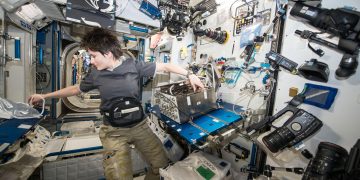
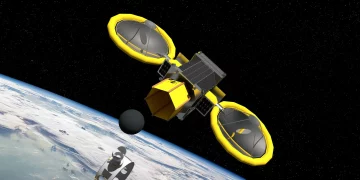








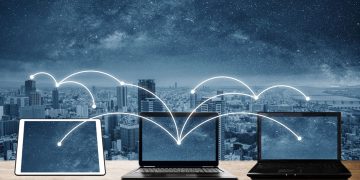




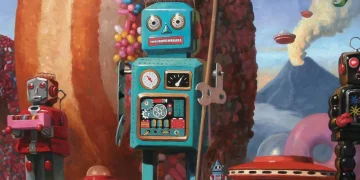

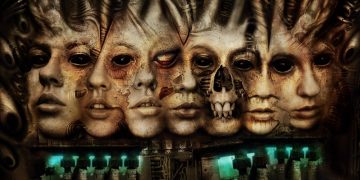













Discussion about this post